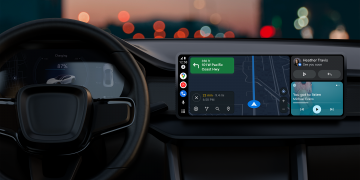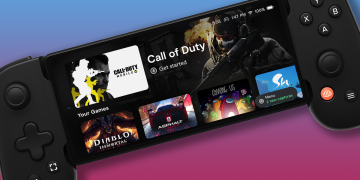Justin Duino / How-To Geek
Google just released Android 13, the newest system update for phones and tablets running Android. It’s already available on Google Pixel phones, but it’s also coming to some of Samsung’s devices as One UI 5.
Samsung is already testing its version of the Android 13 update, called One UI 5.0, in a public beta. In addition to (nearly) everything in regular Android 13, Samsung is adding stackable widgets on the home screen, more options for color themes, optional call backgrounds for each contact, improved reminders, a customizable spacebar row in Samsung Keyboard, updates to Samsung DeX, and much more.
When Will Samsung Release Android 13?
Samsung hasn’t confirmed when it will release its completed version of Android 13, beyond Google’s promise that it will start before the end of 2022. However, we can make an educated guess based on the past few years.
Google released Android 12 on October 4, 2021, and Samsung started rolling out the same update (One UI 4) to its phones in late November. However, a few bugs were discovered, so the update was paused until late December. The year before that, Google released Android 12 in September, and Samsung started rolling it out in late December and early January.
Given that the Android 11 update took around four months to start appearing on Samsung’s flagship devices, and roughly three months for Android 12, a rollout sometime in October or November in 2022 seems likely.
Like most Android device manufacturers, Samsung updates its flagship phones and tablets first — the Galaxy S and Galaxy Tab S series. Cheaper devices are lower priority for major updates, as well as older flagships. For example, the Galaxy S21 received Android 12 starting in December 2021, but the older Galaxy Tab S6 and S6 Lite didn’t get it until March 2022.
Which Phones and Tablets Will Get Android 13?
Samsung hasn’t provided a full list of phones and tablets that will receive Android 13, but the company has promised certain update periods for most of its devices. For example, the Galaxy S10 was released in 2019 and Samsung promised “three generations” of updates, so it will likely stay on Android 12 — it received Android 10, 11, and 12 already.
Below is a list of phones and tablets that should receive Android 13, based on their original software promise (three “generations” for most devices) and the Android version they started with.
- Galaxy S20 series (started on Android 10)
- Galaxy S21 series (started on Android 11)
- Galaxy S22 series (started on Android 12)
- Galaxy Note 20 series (started on Android 10)
- Galaxy Tab S8 series (started on Android 12)
- Galaxy Tab S7 series (started on Android 10)
- Galaxy Z Fold 2, Fold 3, and Fold 4 (started on Android 10+)
- Galaxy Z Flip, Flip 3, and Flip 4 (started on Android 10+)
- Galaxy A52 and A53 (started on Android 11 and 12, respectively)
- Galaxy A71, A72, and A73 (started on Android 10+)
The oldest in the list are phones that shipped with Android 10 and were promised three years of updates, like the Galaxy S20 and original Z Flip. We’re fairly certain the Galaxy S10 series won’t get Android 13, though the Galaxy S10 Lite that arrived much later might — it shipped with Android 10 out of the box, not Android 9 like the other models. The same goes for the Note 10 series and the later Note 10 Lite.
Even though some phones won’t get Android 13, Samsung usually provides security updates for much longer than full Android upgrades. For example, the Galaxy S10 series still has a full year of security fixes left.
RELATED: 10 Hidden Android 13 Features You Might Have Missed
Source by www.howtogeek.com






























